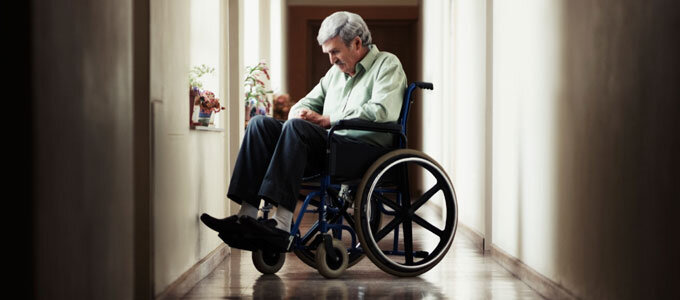
Langdon & Emison attorney Michael Serra has represented families whose loved ones have been neglected or improperly cared for in nursing home facilities in a wide variety of cases. This blog post from him looks at how nursing homes are now more than ever needing to put preventive measures in place to avoid violating the standard of care expected. Michael has represented seriously injured individuals and their families in personal injury matters from coast to coast, and has been recognized by numerous publications for his work in this practice area.
COVID-19 cases have been reported in all 50 states, the District of Columbia, and multiple U.S. territories; many having wide-spread community transmission. Given the high risk of spread once COVID-19 enters a nursing home or other long-term care facility, these facilities must implement adequate infection prevention and control measures to protect residents, families, and staff from serious illness, complications, and death. The failure to implement and enforce these measures violates the standard of care.

These facilities have a legal obligation to implement and enforce adequate policies and procedures to prevent the transmission and spread of COVID-19, even before case are identified in their communities. Visitors and health care professionals continue to be key sources of COVID-19 introduction into nursing homes.
To protect the vulnerable nursing home population, aggressive efforts must be made to restrict visitors and health care professionals. Actively checking every person entering a facility for fever and symptoms of illness – including questioning these individuals regarding recent travel and potential exposure to COVID-19.
Current data strongly suggests person-to-person transmission most commonly happens during close exposure to a person infected with the virus that causes COVID-19, primarily via respiratory droplets produced when the infected person speaks, coughs, or sneezes. Droplets can land in the mouths, noses, or eyes of people who are nearby or possibly be inhaled into the lungs of those within close proximity. Transmission also may occur through contact with contaminated surfaces followed by self-delivery to the eyes, nose, or mouth.
Continued community transmission has increased the number of individuals potentially exposed to and infectious with COVID-19. Based on the spread of the virus, fever and symptom screening have proven to ineffective in identifying infected individuals. Symptom screening will not identify individuals who are infected but otherwise asymptomatic or pre-symptomatic.
Additional interventions are needed to limit the unrecognized introduction of COVID-19 into healthcare settings by these individuals. As part of aggressive source control measures, healthcare facilities must implementing policies requiring everyone entering the facility to wear a cloth face covering while in the building, regardless of symptoms.
The CDC and the state departments of health have issued recommended COVID-19 control measures to prevent transmission of COVID-19 within long-term care facilities. According to the CDC, facilities must be implementing the following measures:
Source Control
-
Visitors: Limit visitors within the facility to those essential for patient safety; limit points of entry and movement within the facility; require face coverings; and implement aggressive screening and monitoring of visitors.
-
Patients: Routine monitoring of all residents, including vitals and pulse oximetry; limit movement of patients within facility; minimize patient-to-patient contact; and require cloth face coverings.
-
Health Care Personnel: Routine monitoring of all health care personnel and other staff; employees must wear masks; any contact with COVID-19 patients or suspected COVID-19 patients must be quarantined.
-
Environmental infection control.
Transmission Standard Precautions
-
Handwashing: Hand hygiene must be performed before and after all patient contact.
-
Personal protective equipment: Health care professionals must use the following: face mask or respirator, eye protection, gloves, and gowns.
-
Engineering controls: Air-filtrations systems within the facility, erecting physical barriers and partitions to guide patients; preventing open doors and windows.
Patient Placement
COVID-19 suspected and confirmed patients: Establishing a dedicated space within the facility to monitor and care for residents with suspected and confirmed COVID-19 and when possible to transfer patients to a hospital. Facilities should have dedicated staff and health care workers for suspected and confirmed COVID-19 residents.
Education
Education of residents, healthcare personnel, and visitors about COVID-19 is critical. Current precautions undertaken by the facilities and actions to protect residents should be organized and communicated.
Coordination
Facilities must establish rapport within and between themselves and public health authorities.



